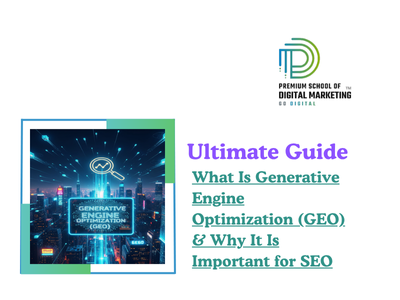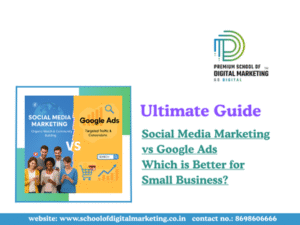Table of Contents
What Is Generative Engine Optimization (GEO) & Why It Is Important for SEO
Introduction
Search engines are advancing and so is SEO. With AI-driven platforms such as Google Search Generative Experience (SGE), ChatGPT, Perplexity, and Gemini influencing how users receive information, marketers are confronted with a new challenge: How can you ensure your content remains visible in this AI-centric environment?
This is where Generative Engine Optimization (GEO) becomes relevant. Consider GEO as the contemporary enhancement to SEO designed not only for conventional search rankings but also for ensuring your content is cited directly in AI-generated responses. In this blog, we will delve into what GEO entails, its significance, and how to apply it for optimal results.
See How It Works – Book a Demo
What Is Generative Engine Optimization (GEO)?
Generative Engine Optimization (GEO) refers to the strategic approach of organizing and structuring your content for AI-driven search engines and generative platforms. While traditional SEO is centered on improving Google rankings, GEO seeks to enhance the likelihood that AI models will reference or summarize your content in their replies.
Key distinction: SEO focuses on attracting clicks, whereas GEO emphasizes being quoted.
GEO vs. Traditional SEO

| Aspect | GEO | Traditional SEO |
| Target System | AI-driven engines (ChatGPT, Gemini, Perplexity, SGE) | Search engines (Google, Bing, etc.) |
| Goal | Be cited or embedded in AI answers | Rank high for keywords |
| Ranking Signals | Data quality, clarity, contextual relevance, source authority | Backlinks, keyword density, technical SEO |
| Content Format | Natural language, Q&A, statistics, quotations | Keyword-optimized blogs, meta tags, schema |
The Importance of GEO for SEO
The manner in which individuals search is rapidly evolving. AI-driven tools are not merely providing search results; they are also summarizing, elucidating, and recommending. This transformation renders GEO essential for your digital marketing approach.
1.Visibility in the Era of AI
As users increasingly depend on generative search engines, conventional click-through SEO is insufficient. GEO guarantees that your content remains visible—even if users bypass the search results page altogether.
2. Establishing Brand Authority
When AI models like ChatGPT reference your brand, it enhances credibility. AI systems are designed to prioritize reliable sources, thus well-optimized GEO content can establish your brand as a trusted authority.
3. Improving User Experience
GEO aligns your content with the way AI conveys information:
- Conversational tone
- Direct responses
- Summaries and lists
This fosters a smoother, quicker, and more pertinent experience for readers.
4. Outpacing Competitors
Pioneers in GEO are securing their brands for the future, adjusting to new search behaviours ahead of their competitors.
5. Insights Driven by Data
GEO introduces novel metrics, such as the frequency with which your content appears in AI summaries or answer boxes. These insights can inform further optimization strategies.
You May Also Like To Read : Why Every Digital Marketer Needs to Learn AI in 2025
Practical GEO Strategies
Implementing GEO is about making your content AI-friendly without losing human appeal.
1.Use Clear Structure and Natural Language
AI models prefer easy-to-read, logically structured content. Use:
- Short paragraphs
- Subheadings (H2, H3)
- Q&A formats for quick scanning
2. Cite Authoritative Sources
When you reference credible studies or data, you make it easier for AI to trust and quote your content.
Example: Instead of saying “many people use voice search”, link to a verified statistic from a trusted research company.
3. Include Statistics and Facts
AI loves numbers. Integrating relevant data makes your content more attractive for AI summaries.
| GEO Strategy | Why It Works | Example |
| Q&A Format | Matches AI answer structure | “What is GEO? GEO stands for…” |
| Data-Backed Claims | Adds credibility | “82% of marketers believe…” |
| Keyword + Context | Improves discoverability | “GEO in SEO strategy” |
4. Use Niche Vocabulary and Technical Terms
By incorporating industry-specific terms, you help AI engines identify your expertise and match you with relevant queries.
5. Demonstrate E-E-A-T Principles
Show Experience, Expertise, Authority, and Trustworthiness in your writing. This builds both human trust and AI trust.
GEO vs. SEO: Do You Need Both?
Yes. Think of SEO as the foundation and GEO as the upgrade.
- SEO keeps you visible on search engines.
- GEO ensures you’re visible inside AI-generated answers.
Together, they give you full coverage—both in traditional search results and emerging AI-driven platforms.
Actionable Steps to Begin with GEO Today
1. Conduct an Audit of Your Current Content
- Identify articles that have the potential to rank effectively in AI-generated summaries.
2. Restructure for Enhanced AI Readability
- Incorporate headings, bullet points, and straightforward answers.
3. Integrate Authoritative Links
- oUtilize reputable industry sources to enhance credibility.
4. Refresh Content with Current Data
- AI prefers information that is up-to-date.
5. Monitor AI Citations
- Employ tools that track when AI models reference your content.
Conclusion
Generative Engine Optimization (GEO) transcends mere buzzword status—it represents the logical progression in the evolution of SEO. As search behaviours increasingly gravitate towards AI-driven platforms, GEO guarantees that your content is not only ranking but also actively influencing AI-generated responses.
If you are already committed to SEO, now is the opportune moment to implement GEO strategies in addition. By structuring your content for AI parsing and citing authoritative sources, the sooner you adapt, the quicker you will gain a competitive edge in the AI-centric search landscape
You May Also Like To Read: Why Should I Learn Digital Marketing in 2025?






